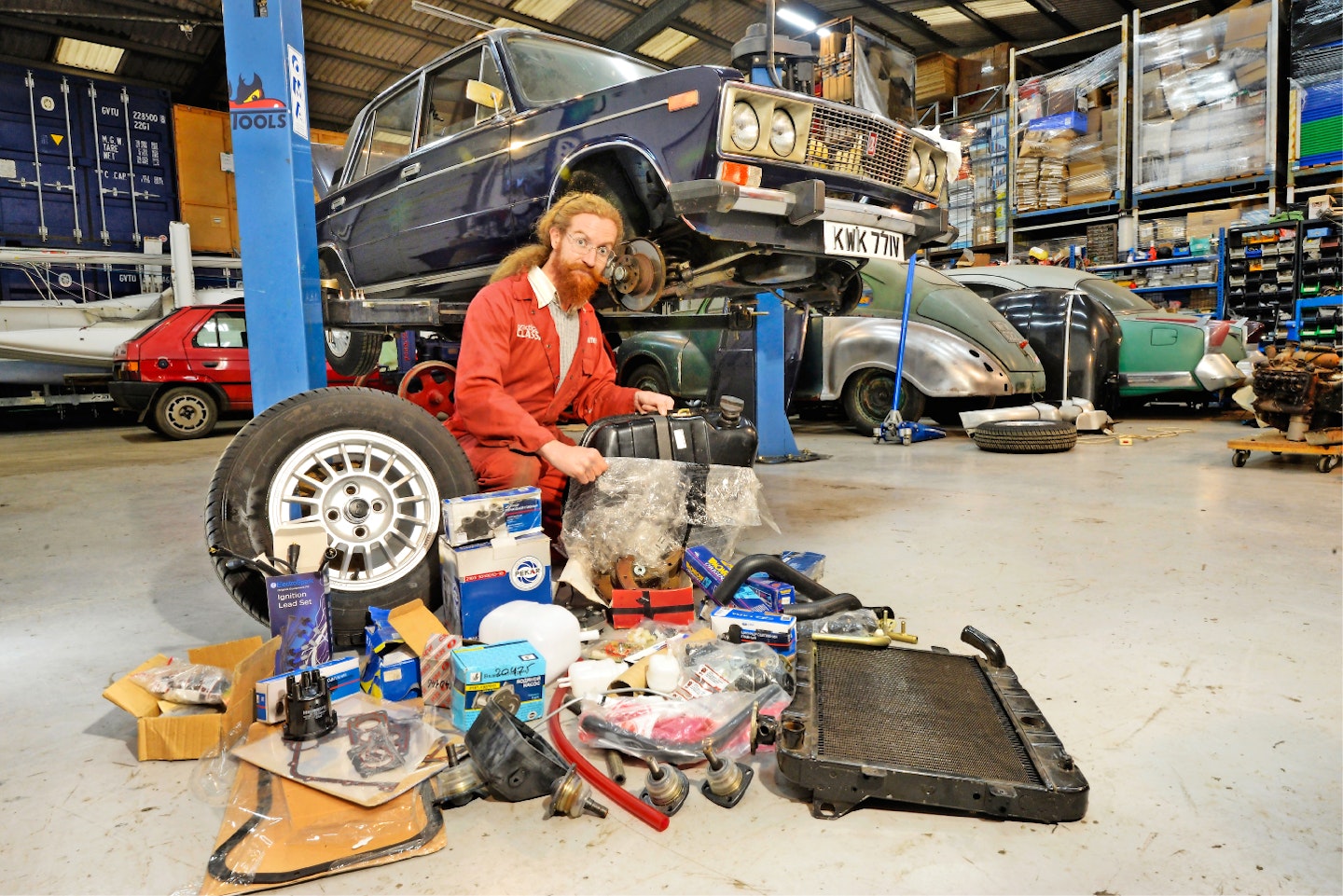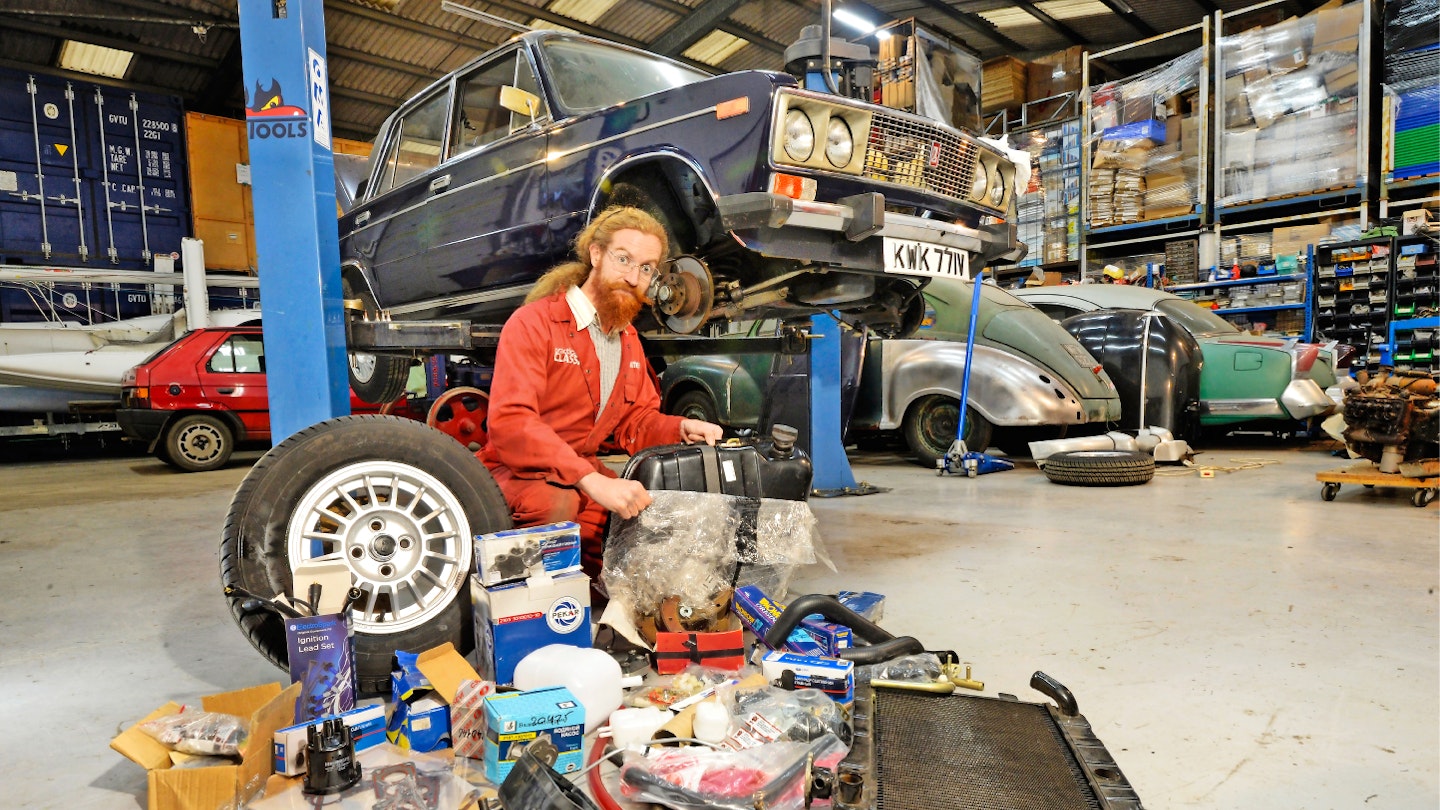
Answer: A common approach to recommissioning a car is to make it just-functional enough for an MoT and then to begin to gently use it, tackling problems as they arise. One snag of this method is the necessity to remove and replace the same components several times.
On Sam’s Lada, for example, the clutch and brake master cylinders, brake servo, throttle linkage, steering column and steering box, manifolds, exhaust downpipe and starter motor all occupied a tangled nest on one side of the engine. It therefore made sense to address all of these in one fell swoop while access was easy.
Another snag of a piecemeal approach is that it involves a lot of tinkering over a period of months and the possibility of breakdowns in awkward places. An alternative approach is to steamroller all problems into submission before they arise. We wouldn’t go so far as to strip the whole car. Instead we’d tackle one system at a time so it never becomes overwhelming.
Whether to repair, replace or reuse components depends on their condition and availability. All parts for Sam’s Lada were readily available for little money, which made replacement a no-brainer in most cases. If he’d been working on his Hotchkiss Grégoire, he’d have had to judge components rather differently.
Begin by giving the engine a service. Change the oil (ideally drop and clean the sump), plugs, points and fanbelt. Set the valve clearances and the timing chain tension or fit a new timing belt. Flush the cooling system and interrogate the water pump, thermostat, radiator and hoses and pipework. Replace all rubber fuel hose. Treat it to new hose clips and an in-line fuel filter. Renew or rebuild the fuel pump. Obtain a service kit for the carburettor (gaskets, rubber parts, needle valve), then clean it out and set its float level. Remove the tank and make sure it isn’t full of rust and the pickup gauze isn’t gunged up.
Rubber exhaust mounts are likely to need replacement. Crusty exhausts can deteriorate quickly and collapse internally, so it’s worth investing in a new one if it’s tired. The braking system should be mostly consigned to the bin. Ditto the clutch hydraulics. Cylinders can be relined. Flexible hoses can be custom made at modest cost. Blow out pipework. Change it if it shows corrosion or damage. Change all pads and shoes. Check the servo, replace its hose and rebuild/replace its hydraulics if it’s remote.
It’s likely that balljoint boots and steering rack gaiters will need replacing. There’s a good chance you’ll find tired balljoints, too. Adjust the steering box and idler. Replace suspension bushes as a set if any
are decaying and test the dampers. Adjust or replace wheel bearings. We’d take a suck-it-and-see approach to the drivetrain, but it’s worth renewing the oil seals of the axle, gearbox and engine. It’s also worth fitting a new clutch kit if you have to separate the engine and gearbox.This might sound like a full rebuild, but it isn’t. It’s a superservice where all the bits liable to early failure are swept away in one go. At the end, you’ll have a car that can be put into full-time use almost immediately and that will function, perform and handle as well – or better – than it did when new.
